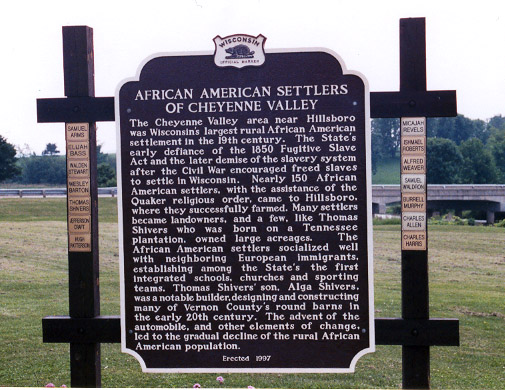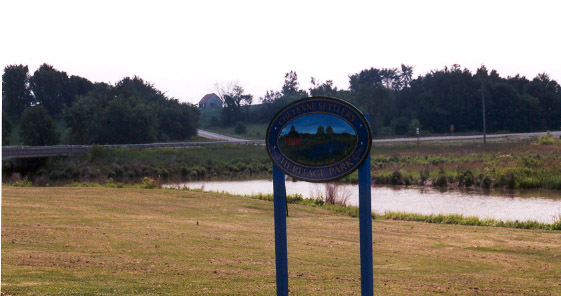
The Earliest African-American Rural Settlements
in Wisconsin
Bibliography here
African-American migration to Midwest throughout history has often been confined to the cities like Milwaukee, Chicago, and St. Louis. However, the tour you will be taking will guide you through the earliest and largest Wisconsin African-American rural (farm) settlements in Wisconsin. Located in Vernon and Grant Counties, these settlements grew in the Cheyenne Valley and at Pleasant Ridge during the 1800s and fostered such achievements as the distinctly-traditional round barn and, possibly, the first integrated school in the nation.
The Cheyenne Valley Settlement Begins,
May 1855 (Junction of Hwy 33/82 and Hwy 80, Hillsboro)

|
In 1840, there were very few African-Americans in Wisconsin. Of over 30,000 (not including Native Americans) people in Wisconsin, less than 200 of them were black. African-American settlement in Wisconsin would increase after the Fugitive Slave Law was passed in 1850. This Act encouraged northerners to return escaped slaves back to their owners in the South. Escaped slaves and free blacks in the North were hunted down for the profit of slave-catchers. Since Wisconsin residents disagreed with the Fugitive Slave Act, many blacks from the South came to Wisconsin to settle, hoping that the state would welcome them as free and equal citizens. |
| The first permanent settler in the Cheyenne Valley was Walden Stewart who was born in North Carolina as a free man. Probably moving north because of the fear surrounding the Fugitive Slave Act, a number of other previous North Carolinian black families followed Stewart’s migration to Wisconsin. |
 |